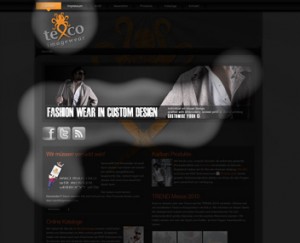News
Company News: biocrea and Boehringer Ingelheim Conclude Asset Purchase Agreement
![]()
biocrea today announced the completion of an asset purchase and licensing deal with Boehringer Ingelheim. Under the terms of the agreement, biocrea will receive an undisclosed payment and will transfer the exclusive global rights for certain research programs originating from its phosphodiesterase (PDE) platform to Boehringer Ingelheim. This includes biocrea´s PDE2 inhibitors and its most advanced compound BCA909.
“This transaction marks a key milestone in the evolution of biocrea, which was created only about a year ago,” said Tom Kronbach, CEO of biocrea. ”Importantly, this deal demonstrates our ability to identify and validate disease-relevant novel mechanisms of action for which we create high-quality drug candidates. The proceeds from this agreement will allow us to implement our strategy to build a sustainable company over the next several years.”
Food for Thought: The Indian Biotechnology Industry – Opportunities for Europe
The Indian biotechnology industry is growing at record speed, both in terms of turnover and investments. While Indian biotech is recognized in the West for high quality services, bioinformatics and manufacturing, it also offers great opportunities for conducting clinical trials and manufacturing of biosimilars. Only recently, European companies have started to realize that India also is a huge and receptive market for innovative drugs and medtech products.
With a consistent double digit growth rate throughout the last decade the Indian biotechnology industry has been recognized as a sun-rise industry not only in India but also globally. According to a survey based on inputs from over 150 biotech companies, conducted by Biospectrum – Association of Biotechnology Led Enterprises, Bangalore India (2010-2011), the Indian biotechnology industry posted revenues of $ 2.9 billion, in spite of the global recession during 2009 and slow recovery during 2010. The total turnover is expected to reach $ 8.6 billion in 2015 with an anticipated annual growth rate of 30%.
Five Segments
The Indian biotechnology industry has five thriving segments – agro-biotech, bio-industrial, bio-informatics, bio-pharma and bio-services. Among these five sectors, the bio-pharma segment has seen major growth stimulations retaining the first position in turnover and investment, closely followed by the bio-industrial segment which has registered the fastest growth rate within the sector, surging from less than 5% market share five years ago to over 14%. Recently, the Indian Biotechnology sector has witnessed close to 50 major deals, a development which has boosted investment in this sector and catalyzed its growth.
India offers low-cost, top quality manufacturing facilities as well as research and development capabilities – not only in the field of small molecule generics, but also in drug development and innovative formulations. Another strength is in the well-developed segment of computational biology and bioinformatics. India fully respects the international standard of intellectual property rights and has an abundant pool of well-trained scientists both at pre- and post-doctoral level, who are well versed in English and are available at a fraction of cost required in Europe. Thus, a large number of biotech companies in India offer R&D support and services related to biotechnological analytics, ranging from large scale DNA sequencing, gene cloning, fermentation technology, small animal experimentation to protein purification. Many biotech and pharmaceutical companies in developed nations faced with crunch in funding are taking cost saving advantage by outsourcing some of their research and development projects to Indian companies.
Biosimilars and Clinical Trials
Two sectors within the broad framework of biotechnology, (a) biosimilar manufacturing and R & D and (b) clinical research operations, are currently receiving phenomenal industry interest. According to the report “Biosimilars and Biobetters: Positioning for a New Market”, a large number of biologics with a potential value of about $59 billion are threatened by competition from biosimilars because of expired or near-to-expiration patents. It is expected that by 2013, biologics sales will have almost doubled to $202 billion, of which $80 billion will be susceptible to biosimilar competition, and biosimilars could generate a global market of $5.6 billion. India is well positioned to capture a sizeable portion of this market. The turnover of Indian biosimilar products is expected to have increased from $ 200 million in 2008 to $580 million in 2012.
India is also gaining importance as a top clinical trial destination, boosted by a large number of world class hospital chains equipped with the latest medical technology and staffed with well qualified medical professionals, being established throughout India. Together with a large number of well qualified companies (compliant in GCP, GLP, ICH and ISO standards) offering services in conducting clinical research this makes India a destination of choice for saving time and money with clinical trials. According to a joint study by an industry body and Ernst and Young (E&Y) released in August 2009, industry-sponsored Phase II and Phase III clinical trial sites in India have grown by 116 per cent from June 2008 to August 2009, advancing the country from rank 18 to 12 across the 60 most active countries. India participates in 7% of the global Phase III trials and 3.2% of Phase II trials, with a 39% CAGR of industry-sponsored trials from 2004-08.
Therefore, by collaborating with Indian companies, European companies can considerably save on their R&D budget by cost cutting and speeding up their discovery process.
Huge Market
But India has more to offer: the country is a huge market for innovative products, services and technologies that companies in Europe can offer. However, the lucrative Indian market can be quite challenging and therefore a thorough preparation is necessary before entering the market. It is recommended that companies aiming to enter India must plan their strategy well. They should gain firsthand experience and insight by visiting India, talking to their potential partners, clients and investors. This process can be considerably aided by professional experts who are operating in Europe and have a thorough knowledge of India and the science behind the biotechnology business. In addition, support from organizations like the various external Chambers of Commerce established throughout Europe, the Indo-German Chamber of Commerce, Trade Associations, the IGEP Foundation, commercial sections of embassies operating in India, etc. can be helpful. Attending specific and focused trade fairs in India or Indo-German Biotech Conferences being held in Germany can be beneficial, too.
Dr. Amal Mukhopadhyay is founder and CEO of ELGA Biotech, Hamburg, an organization dedicated to promote Indo-German cooperations in biotechnology and life sciences.
Innovation Radar: Improving Websites by Neuroscience
How to improve user attention to your website? This is a crucial question because visitors decide in less than five seconds on whether to proceed and look further or to just click away.
Based on insights of neuroscience, the German company Whitematter Labs GmbH has developed EyeQuant, a patent-pending neurotechnology that helps companies optimize user attention.
The web-based tools identify the most eye-catching elements of a website using a predictive neuroscience model of human attention. The technology is based on eye-tracking data gathered in studies with several hundred human subjects conducted by visual neuroscientist Peter Koenig and his Neurobiopsychology Lab at the University of Osnabrueck, Germany.
The analysis can be performed by uploading screenshots to the EyeQuant website and is answering crucial questions: what will users see at first glance? Which elements of the website garner most attention? What are the regions of interest?

Website owners will get a map of the eye-catching sections and a perception map of what potential customers will focus on within the first few seconds – and what they ignore. Based on these data, websites can be further improved and subsequently tested again.
The technology thereby helps companies and web designers to understand and optimize landing pages and to improve conversion rates. EyeQuant offers the free analysis of two website screenshots. More detailed analyses can be booked for projects or as a flat rate, but it is also possible to obtain the tools as white label or to integrate it in own websites and marketing tools.
[poll id=”3″]
Innovation Radar: A Game Changing Technology for Biomolecule Analytics
All biomolecules operate and interact in aqueous solutions, surrounded by a characteristic hydration shell. Virtually any conformational change of a biomolecule, e.g. the formation of a protein-protein complex or the binding of a small molecule, results in a change of the individual hydration shell.
A German company called NanoTemper Technologies has found a way to easily monitor these specific changes in the hydration shell and to derive quantitative information on interactions, conformational changes and macromolecular stability. The beauty of the concept termed Microscale Thermophoresis (MST) lies in its ability to observe and measure various parameters, such as affinities and binding energetics, at conditions which almost fully mirror the native environment of the biomolecules found in cells.
This is of great value, in particular for interactions that are difficult to access with standard methods, like the binding of small molecules or single ions to larger components of the cell, or the interactions of peptides and proteins to membrane receptors, the most important pharmaceutical drug targets.
NanoTemper, a spin-off from the Center of NanoScience (CeNS) at Ludwig-Maximilians-University in Munich (Germany), was founded in 2008. The company is headquartered in Munich and runs a fully owned subsidiary in San Francisco (USA). NanoTemper offers instruments and consumables to customers worldwide. The products provide scientists in basic research with cost-effective access to an enabling technology and allow experiments that have never been possible before. Pharmaceutical and biotech companies can use the technology for faster and better characterization of drug candidates. For more information visit www.nanotemper.de.
Pictured below: Monolith NT.115, one of NanoTemper´s Microscale Thermophoresis instruments



